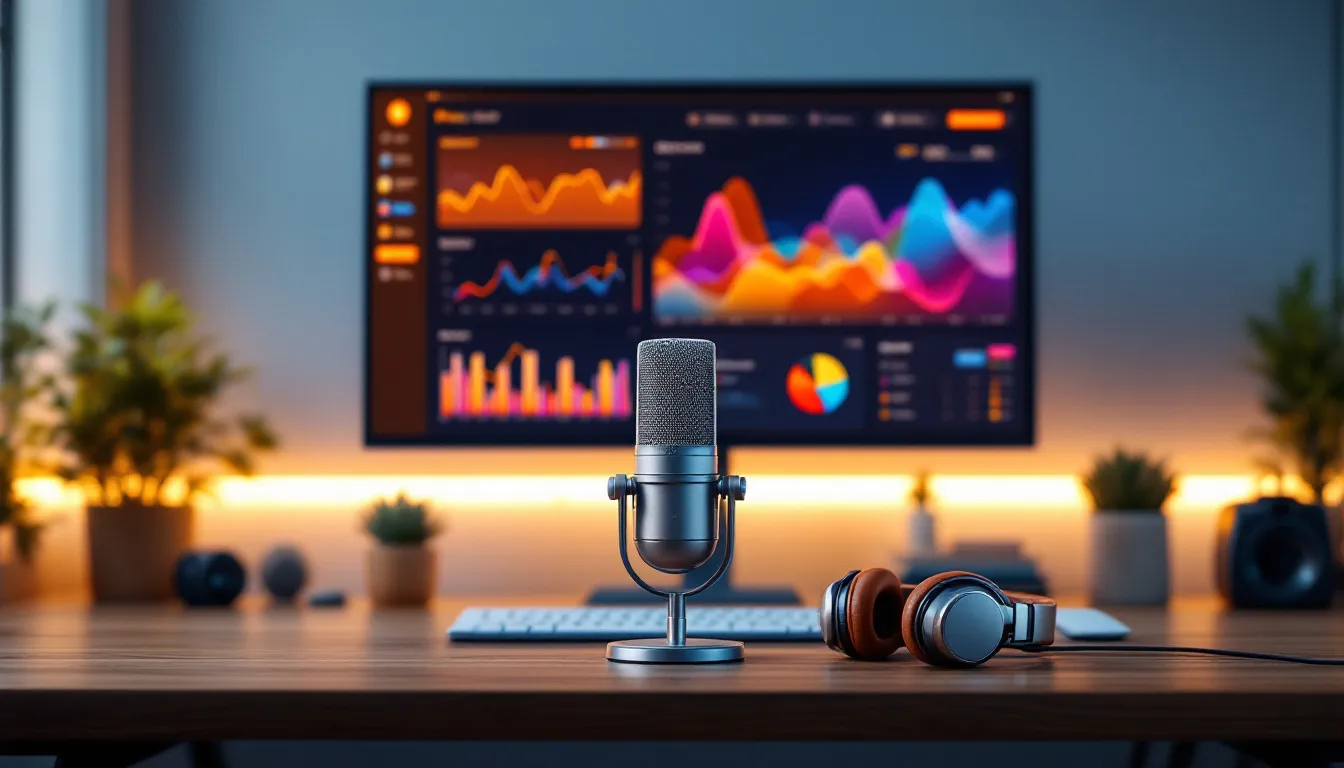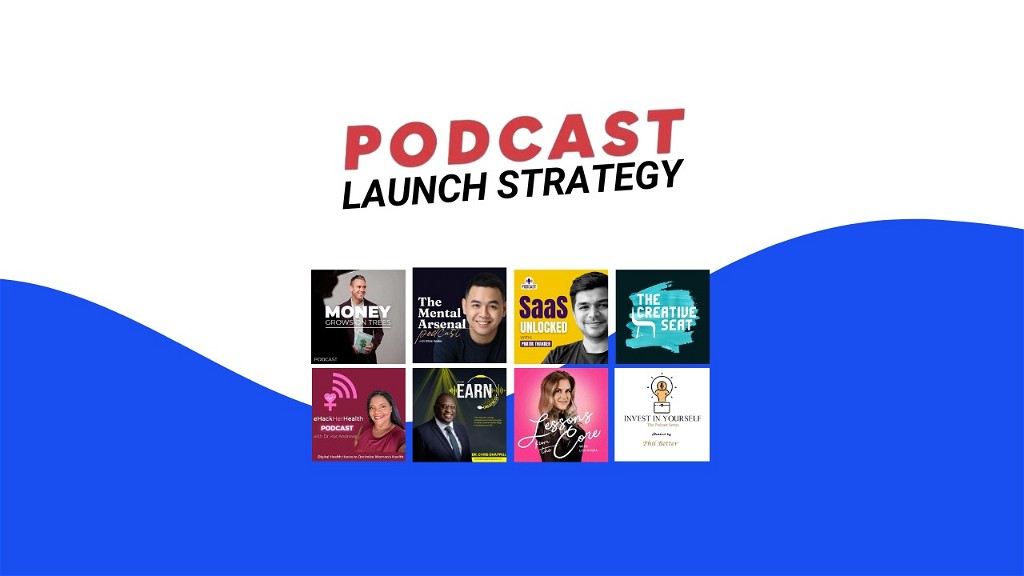Want to reach more listeners and boost your podcast's impact? Here's how to make your show accessible to everyone:
- Provide good transcripts
- Ensure clear audio quality
- Write clear titles and show notes
- Make your website easy to use
- Offer different content types
- Use a good podcast player
- Create easy-to-use promotional materials
Why bother? Accessibility isn't just nice - it's smart:
- Tap into a bigger audience (10 million+ Americans are deaf or hard of hearing)
- Improve your SEO
- Stay legally compliant
Quick Comparison of Accessibility Tools:
| Tool | Purpose | Cost |
|---|---|---|
| Descript | AI transcription | $12/600 min |
| Rev | Human transcription | $1.25/min |
| AblePlayer | Accessible web player | Free |
| Overcast | Accessible mobile player | Free (with ads) |
Making your podcast accessible opens doors to more listeners and boosts your reach. It's an ongoing process, but these tips will get you started on creating content everyone can enjoy.
Related video from YouTube
Provide Good Transcripts
Transcripts are a big deal for podcasts. They open your content to new audiences and boost SEO. Here's why they matter and how to create them.
Why Transcripts Are Important
- Reach more people: 10 million+ Americans are deaf or hard of hearing. Transcripts make your podcast accessible to them.
- SEO boost: A 30-minute episode can generate 6,000 words for search engines to index.
- Different learning styles: Some folks prefer reading to listening.
Making Good Transcripts
It's not just about writing down words. Here's what to do:
- Use clear formatting
- Include speaker labels
- Add timestamps
- Proofread (especially names and keywords)
Transcription Tools
You've got options:
| Method | Pros | Cons | Cost |
|---|---|---|---|
| DIY | Free, full control | Time-consuming | Your time |
| AI Tools | Fast, cheap | Needs editing | $0.02-$0.25/min |
| Human Services | High accuracy | Pricier | $1-$2.50/min |
Popular tools:
- Descript: 600 minutes/month for $12
- Castmagic: 200 minutes/month for $39
- Rev: $1.25/minute for human transcription
"Offering a podcast transcription helps you reach more people & strengthen your message." - Podcast Accessibility Expert
AI tools are faster and cheaper but need editing. Human services like Rev offer 99% accuracy but cost more.
Bottom line: Adding transcripts makes your podcast more accessible, searchable, and shareable. It's a win for you and your listeners.
2. Make Sure Audio Is Clear
Clear audio is key for all listeners, especially those with hearing issues. Here's why it matters and how to nail it:
Why Clear Audio Matters
Bad audio? Listeners tune out. And you can't fix it in post. Get it right from the start.
Best Equipment for Good Sound
Here's what you need:
| Equipment | Purpose | Example |
|---|---|---|
| Microphone | Captures voice | Samson Q2U ($70) |
| Pop filter | Cuts plosives | Any basic model |
| Headphones | Monitors sound | Noise-canceling |
| Mic stand | Holds mic | Desk or boom arm |
| Software | Records/edits | Audacity (free) |
The Samson Q2U is a solid starter. It's USB and XLR, so you can use it now and upgrade later.
Tips for Better Audio Recording
- Pick the right space: Avoid small, echo-y rooms. Go for larger rooms with carpet and bookcases.
- Kill the noise: Shut off fans, AC, and computer sounds before you hit record.
- Get close to the mic: Your voice should be louder than any background noise.
- Use a pop filter: It stops those "p" and "b" sounds from popping.
- Watch your levels: Aim for -20 dB on your mixer to avoid distortion.
- Wear headphones: Catch unwanted noises in real-time.
- Do a test run: Record a quick clip and listen back before the full session.
3. Write Clear Titles and Show Notes
Titles and show notes are your podcast's first impression. They're your chance to grab attention and explain what listeners will get.
How to Write Good Episode Titles
Your title needs to work hard:
- Be specific: "Top 10 USB Mics for Podcasting" beats "Episode 25".
- Front-load keywords: Important words go first.
- Keep it short: 60 characters max.
- Skip the fluff: No podcast name or episode number.
| Do | Don't |
|---|---|
| "Top 10 USB Mics for Podcasting" | "Episode 25" |
| "How to Start a Podcast on a Budget" | "Podcraft Episode 25: Top 10 USB Mics for Podcasting" |
| "Interview: Gary Vee on Social Media Marketing" | "Gary Vaynerchuk Talks About Stuff" |
What to Include in Show Notes
Show notes are your episode's pitch. Include:
- Quick summary (1-2 sentences)
- Main topics or takeaways
- Guest info and links
- Relevant resources
Here's a template:
Episode summary: [1-2 sentences]
In this episode, we cover:
- Topic 1
- Topic 2
- Topic 3
Guest: [Name, title, brief bio]
Links and resources:
- [Resource 1]
- [Resource 2]
Using Timestamps in Show Notes
Timestamps help listeners navigate. They're great for longer shows:
- List major topics
- Add start times (minutes:seconds)
- Keep it brief
Example:
00:00 - Intro
02:15 - What is podcast accessibility?
05:30 - Tip 1: Provide transcripts
12:45 - Tip 2: Improve audio quality
18:20 - Wrap-up and next steps
Good show notes aren't just for listeners. They boost SEO too, making your podcast easier to find online.
"Your podcast description is one of the most crucial texts associated with your show, so it's worth taking the time to write a good one." - Carey Green, host of Podcastification and founder of Podcast Fast Track.
sbb-itb-cdb7710
4. Make Your Website Easy to Use
Your podcast website is where listeners find episodes, learn about your show, and connect with you. But a confusing site can drive potential fans away. Here's how to make your podcast website work for everyone:
Key Features for a User-Friendly Site
A good podcast site needs:
- Clear navigation
- Accessible content
- Mobile-friendly design
- Works with assistive tech
Quick website checklist:
| Feature | Purpose |
|---|---|
| Homepage with show description | Intro for new visitors |
| Episode pages | Full show notes and easy listening |
| "About" page | Details on your show and hosts |
| "Subscribe" page | Help listeners find you on their apps |
Colors and Fonts That Work
Pick colors and fonts that are easy on the eyes:
- High contrast between text and background
- Screen-friendly fonts
- Adjustable text size
Black text on white? It's a classic for a reason. And fonts like Arial or Verdana? Great for web reading.
Playing Nice with Screen Readers
Screen readers are a must for visually impaired users. Make your site work well with them:
- Use proper HTML tags
- Add alt text to images
- Use ARIA roles for complex elements
- Write clear headings
Here's how to structure your content:
1. Use meaningful headers
Headers help screen readers get your page structure. Use H1, H2, H3 in order.
2. Make forms accessible
Label forms clearly and make them keyboard-friendly.
3. Write descriptive links
"Listen to our latest episode" beats "click here" any day.
4. Test it yourself
Try NV Access (Windows) or VoiceOver (Mac) to spot issues you might miss.
5. Offer Different Content Types
Want to reach more people with your podcast? Offer it in different formats. Here's how:
Add Video
People love video content. So why not record your podcast sessions?
- Film your podcast recordings
- Spice it up with visuals or animations
- Post on YouTube and your site
Create Written Content
Some folks prefer reading. Give them what they want:
- Turn episodes into blog posts
- Make full transcripts
- Write up show notes with timestamps
Cater to Everyone
Different strokes for different folks:
| Format | Why It's Great |
|---|---|
| Audio | Classic podcast experience |
| Video | Visual appeal, easy to share |
| Text | For readers, boosts SEO |
Pro tip: Use RedCircle to share your podcast across platforms, including YouTube.
6. Use a Good Podcast Player
Picking the right podcast player can make or break your listeners' experience. Here's what to look for and some top options.
What Makes a Good Podcast Player?
A solid podcast player should:
- Work with keyboards
- Play nice with screen readers
- Let users control playback speed
- Offer offline listening
Best Platforms for Easy Listening
Some players stand out:
| Player | Cool Features | Cost |
|---|---|---|
| AblePlayer | Synced transcripts, keyboard-friendly | Free |
| Overcast | Clip sharing, voice boost | Free (ads), $10/year (ad-free) |
| Pocket Casts | Cross-device sync, speed control | Free, $4.63/month (premium) |
Fun fact: The W3C and The A11y Rules Podcast use AblePlayer. That's a pretty good endorsement!
Making Players Easy to Use
To make your player work for everyone:
- Test with a keyboard
- Check text contrast
- Offer downloads
- Ask for listener feedback
"Showing interest in accessibility opens conversations and pushes web accessibility forward."
Don't like your current player? Speak up! Your feedback could help improve the experience for all listeners.
7. Create Easy-to-Use Promotional Materials
Your podcast's promo materials should be as accessible as your audio. Here's how to make them work for everyone:
Podcast Artwork That Pops
Your cover art is often a listener's first impression. Make it count:
- Keep it simple
- Use high contrast
- Size it right: 3000x3000 pixels at 300 DPI, then scale to 1400x1400 at 72 DPI
| Element | Do This |
|---|---|
| Colors | High contrast, 2-3 max |
| Fonts | 1-2 easy-to-read fonts |
| Text | Just the podcast name |
| File | JPEG or PNG, under 500 KB |
Social Media Images That Talk
Alt text is your friend. Here's how to nail it:
- Be brief but clear
- Focus on the image's point
- Sprinkle in keywords naturally
Instead of "Pancakes", try:
"Pancake stack with berries, syrup pouring, purple background"
Marketing That Reaches Everyone
Don't stop at images:
- Transcribe video promos
- Caption your videos
- Make your site screen reader-friendly
- Use plain language
Remember: Accessible marketing = bigger audience.
Conclusion
Making your podcast accessible isn't just good practice—it's a game-changer. By following these 7 tips, you're opening doors for a wider audience and boosting your podcast's reach.
Why does it matter? Let's break it down:
1. Legal compliance
The ADA now applies to online content, including podcasts. In 2020, Gimlet Media faced a lawsuit for not making their podcasts accessible to deaf and hard-of-hearing listeners.
2. Bigger audience
By 2025, the U.S. will have over 144 million podcast listeners. Accessible content taps into this growing market.
3. Brand awareness
Business podcasts can increase brand awareness by up to 89%.
Accessibility is an ongoing commitment. Keep learning, keep improving, and watch your podcast grow. Your efforts will pay off in listener loyalty and a more inclusive podcasting world.
"Access to information and communications technologies, including the Web, is defined as a basic human right in the United Nations Convention on the Rights of Persons with Disabilities (UN CRPD)." - W3 WAI




